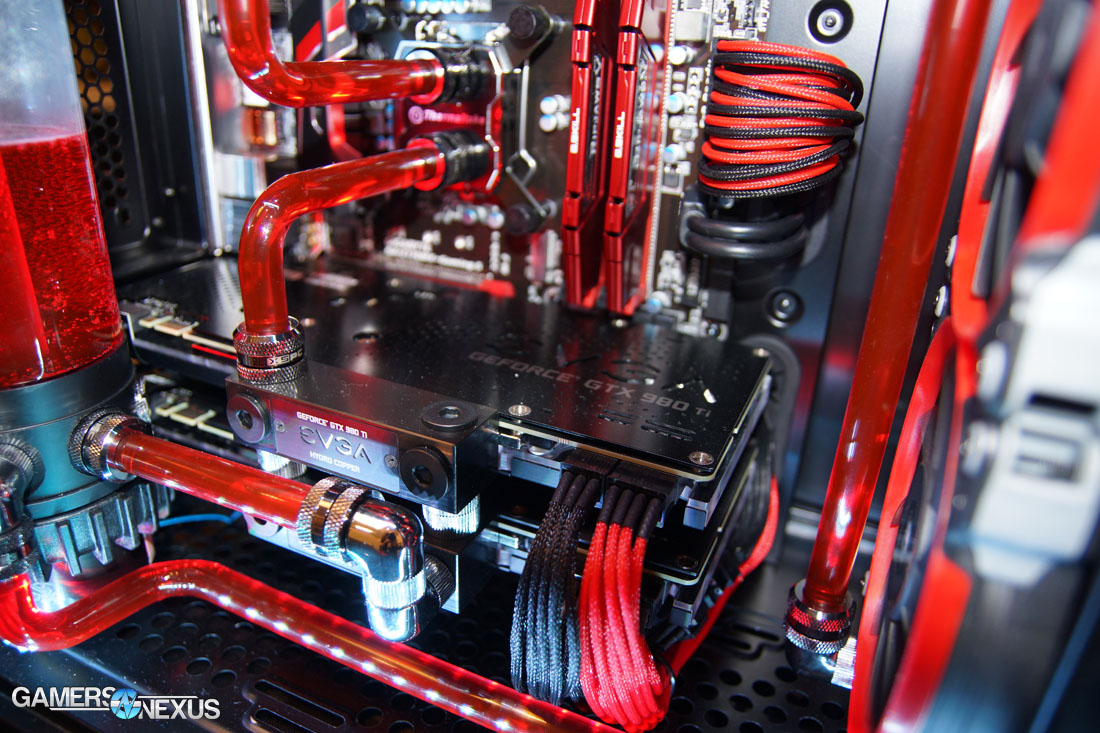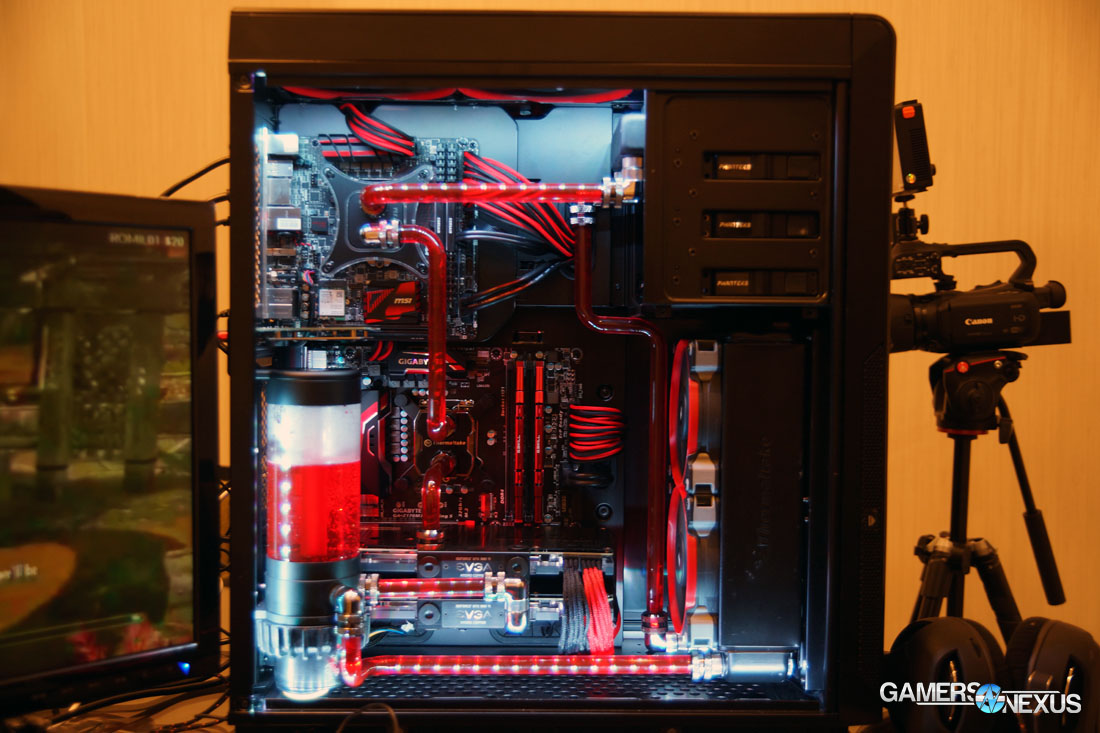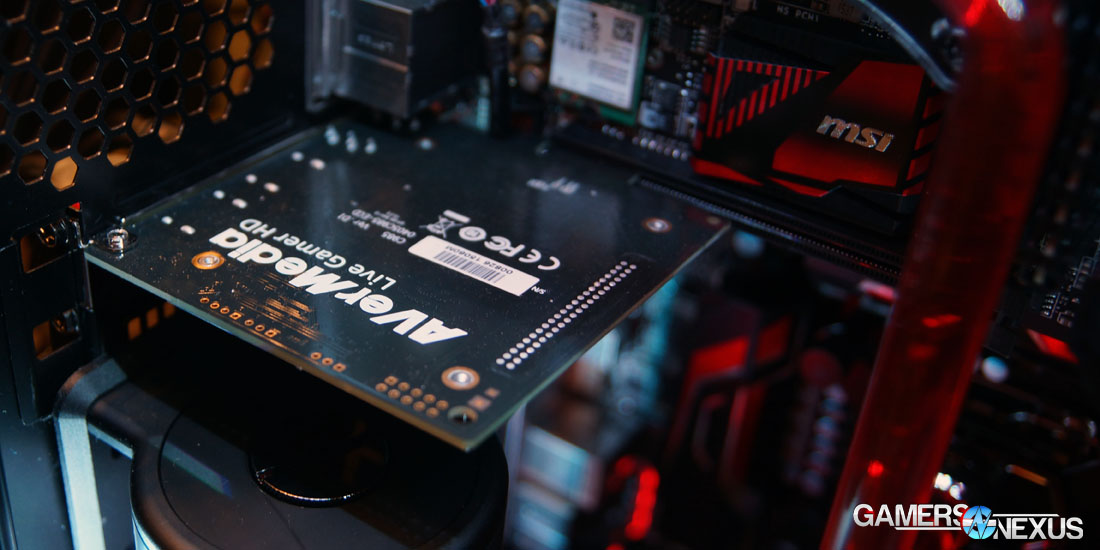System Integrator (SI) CyberPower launched its new Two Computers, One Case gaming PC at CES 2016, dubbed the “Pro Streamer.” The multi-system amalgam is housed within the Phanteks Mini-XL enclosure, a case outfitted with dual-motherboard mounting points for single-PSU operation of two complete computers. Outside of building an internally-housed NAS, local media server, or streaming pre-buffer rig, use cases are relatively slim for the Mini-XL. In this instance, the streaming rig is a sensible fit.
Four SKUs of Pro Streamer boxes exist, but we’re mostly talking about the lowest SKU, as that’s generally the differentiating factor between system integrators; if there’s a weak point, it’s always the lower-end SKUs with haphazard specification listings. For the Pro Streamer 100, CyberPower’s equipped the primary gaming PC (micro-ATX) with a Z170 motherboard, GTX 970 4GB card, 2x8GB RAM, CLC, and an i5-6600K; the secondary buffer machine is outfitted with a more modest Core i3-6300 CPU and stock cooler, 2x4GB RAM, and AverMedia Live Gamer HD capture card (a $200 device). These two builds are installed in the same Phanteks Mini-XL, landing the final price at $1900.
That’s the point of pain: $1900. For a single PC, $1900 easily affords a GTX 980 Ti (or two) and Core i7 processor, but the Pro Streamer setup is a two-PC solution with an ancillary capture card, adding substantially to build cost. This is effectively two computers.
How Does it Work?
There’s no new science here. We’ve been prebuffering capture and framerate testing rigs for years, as it’s the only way to isolate component performance during framerate capture. The concept is fairly straight-forward: The main system (lower of the two) runs the games and necessary software, but the secondary system (top, mini-ITX) uses its capture card and CPU to pre-buffer the video output. All video encoding is happening on the secondary system in this instance, so stream encode/decode processing is isolated and removed from the primary gaming PC. That ensures all CPU and GPU cycles are reserved for the actual game processing, meaning a constant quality push to the streaming service.
And, again, we’re talking standard setup – this isn’t a CyberPower concept but, as we understand it, they are the first SI to offer something of this exact nature.
That’s where the “Pro” moniker comes in. These configurations are targeted squarely at streamers who hope to (or already do) make money off of Twitch and YouTube content streaming and creation. In a streaming scenario where it’s the person’s job, a drop in performance resultant of encode/decode processing overhead could cost the game – CSGO or DOTA, for instance, wouldn’t be forgiving of a sudden FPS dip during a high-crunch period.
We won’t be able to do a proper cost analysis of the CyberPower box until we’re home from CES, at which point we’ll look at individual component pricing, assembly overhead paid by the user, and efficacy in actual streaming scenarios against single PCs. The concept is solid and known to provide reliable, stable streaming; the market size is incredibly small, being that the systems are targeted almost entirely at semi-to-pro class streamers. We don’t think that casual streamers need a setup quite this powerful – a normal single-PC build would get the job done and, with the right software/hardware configuration, shouldn’t be too abusive on frametimes.
More on this topic as we have time to adequately research the builds CyberPower is offering.
Writing, Presenter: Steve “Lelldorianx” Burke.
Film, Video Editing: Keegan “HornetSting” Gallick.


